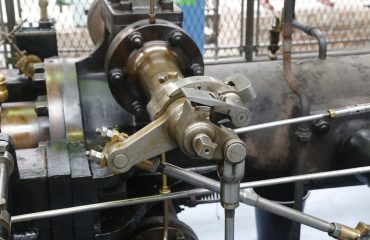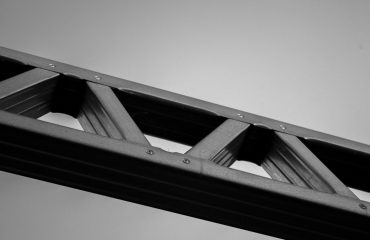body {
font-family: sans-serif;
line-height: 1.6;
}
h1, h2, h3 {
color: #333;
}
The safe and efficient transportation of natural gas relies heavily on the integrity of the pipelines. Corrosion is a significant threat, leading to leaks, environmental damage, and potential safety hazards. To combat this, various protective coatings are applied to gas pipelines, with epoxy (EP), polypropylene (PP), and polyethylene (PE) coatings being among the most prevalent. This comprehensive guide delves into the specifics of these coatings, their applications, and their crucial role in ensuring pipeline longevity and safety.
Understanding Epoxy (EP) Coated Pipes for Gas Pipelines
Epoxy coatings are thermosetting polymers known for their excellent adhesion, chemical resistance, and mechanical strength. They offer superior protection against corrosion caused by soil, water, and other aggressive environments. EP coatings are typically applied using a fusion-bonded epoxy (FBE) process, creating a robust, uniform layer that adheres tightly to the pipe’s surface. This process involves meticulously cleaning the pipe, applying the epoxy powder, and then curing it in a controlled environment using heat and pressure. The thickness of the FBE coating varies depending on the application and the specific requirements of the pipeline. Thicker coatings offer greater protection against more aggressive environments.
One key advantage of FBE coatings is their ability to withstand high temperatures and pressures, making them suitable for high-pressure gas pipelines. However, they can be susceptible to damage from mechanical impact, requiring careful handling during transportation and installation. Proper surface preparation is critical for optimal adhesion and performance. Any imperfections in the pipe’s surface can compromise the integrity of the coating and lead to premature failure.
Polypropylene (PP) Coated Pipes: A Durable Solution
Polypropylene (PP) coatings offer a different set of advantages, primarily their excellent resistance to abrasion and impact. PP coatings are applied using extrusion or powder coating methods. The extruded PP coating provides a continuous, seamless layer that protects the pipe from physical damage. Powder coating techniques, while offering a similar protective layer, can be more cost-effective for certain applications. PP coatings are commonly used in areas where the pipeline is subjected to high levels of mechanical stress, such as areas with rocky terrain or where the pipeline is exposed to significant vibrations.
PP coatings also exhibit good chemical resistance, though not as extensive as epoxy coatings. They are particularly suitable for applications where the pipeline might experience abrasion from soil movement or external forces. The flexibility of PP also makes it suitable for pipelines that need to withstand bending or flexing during installation.
Polyethylene (PE) Coated Pipes: Cost-Effective Protection
Polyethylene (PE) coatings are a more cost-effective option compared to epoxy and polypropylene. They are applied using extrusion methods, resulting in a smooth, continuous layer of plastic that protects the pipe from corrosion. PE coatings are commonly used in less aggressive environments where the primary concern is corrosion prevention. Their flexibility and ease of installation make them suitable for a wide range of applications.
While PE coatings offer good corrosion protection, they are less resistant to abrasion and impact compared to PP coatings. Their performance in high-temperature or high-pressure applications may also be limited compared to epoxy coatings. Therefore, the suitability of PE coatings needs to be carefully assessed based on the specific environmental conditions and operational requirements of the gas pipeline.
Comparing EP, PP, and PE Coatings: Choosing the Right Protection
The choice between EP, PP, and PE coatings depends on several factors, including the environmental conditions, the pipeline’s operating pressure and temperature, the budget, and the specific requirements of the project. Epoxy coatings offer superior corrosion resistance and are ideal for high-pressure, high-temperature applications. Polypropylene coatings provide excellent abrasion and impact resistance, making them suitable for harsh environments with potential for physical damage. Polyethylene coatings offer a cost-effective solution for applications with less stringent requirements.
A comprehensive risk assessment should be conducted to determine the most appropriate coating for a particular gas pipeline project. This assessment should consider factors such as soil chemistry, potential for mechanical damage, and the overall operational requirements of the pipeline.
Installation and Maintenance of Coated Pipes
Proper installation is crucial for the effectiveness of any coating system. Careful handling during transportation and installation is essential to avoid damaging the coating. Special precautions should be taken to prevent scratches, dents, or other types of mechanical damage that can compromise the coating’s integrity. The installation process should adhere to industry best practices and relevant standards to ensure a long service life.
Regular inspection and maintenance are also crucial for maintaining the integrity of the coated pipeline. Regular inspections can help identify any potential problems early on, allowing for timely repairs and preventing costly failures. Proper maintenance practices can significantly extend the lifespan of the pipeline and ensure its continued safe and efficient operation.
Choosing the right coated pipe for your gas pipeline project is a critical decision impacting safety, longevity, and cost-effectiveness. Understanding the unique properties of EP, PP, and PE coatings allows for informed decision-making, leading to a robust and reliable gas transportation infrastructure.
SEO Tags:
- EP coated pipes
- PP coated pipes
- PE coated pipes
- Gas pipeline coatings
- Corrosion protection pipelines




